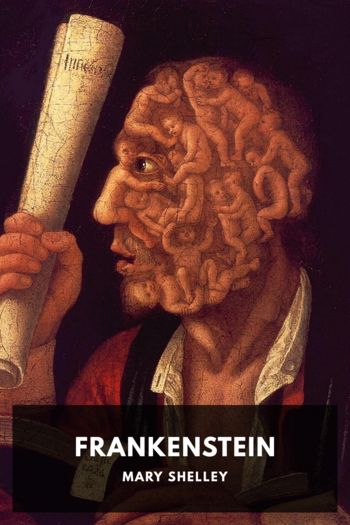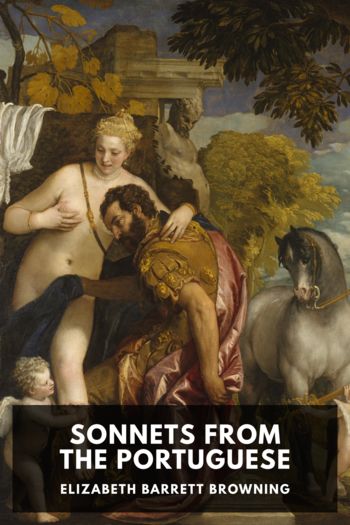Two-Way Mirror, Fiona Sampson [children's ebooks online .txt] 📗

- Author: Fiona Sampson
Book online «Two-Way Mirror, Fiona Sampson [children's ebooks online .txt] 📗». Author Fiona Sampson
She’s also nearly seventy, while Miss Mitford will turn fifty next year. These distinguished, much published women understand just how hard it is to achieve what Elizabeth wants: to be a leading writer who is a woman. (Miss Mitford herself hoped to be the country’s pre-eminent female poet when she was young.) They also recognise how difficult it’s been to achieve what Elizabeth already has. Miss Mitford declares her Preface to Prometheus Unbound ‘unmatched in modern prose […] Depend upon it,’ she goes on, ‘Her “Essay on Mind” […] contain[s] allusions to books, as if known by everybody, which Henry Cary declared to me no young man of his day at Oxford had ever looked into.’
This is another piece of strategic advocacy, this time to the fashionable preacher William Harness, incumbent of Regent Square Chapel, Bloomsbury, a lifelong friend of Lord Byron’s, and still a well-connected littérateur. Miss Mitford certainly knows how to hustle, and there’s a sense of urgency to her advocacy. Within three months of meeting Elizabeth, she has already realised that all is not well at 74 Gloucester Place:
Of course the poverty is only comparative—people who live in Gloucester Place are probably what I should call rich—still with ten children coming into life the change is of course great; & the mother being dead, & the father utterly dispirited, my lovely young friend has been living in the middle of gaiety in a seclusion the most absolute […] & chiefly occupied in teaching her little brothers Greek.
Astutely, she makes the link between Edward Barrett Moulton-Barrett’s depression and the restrictive ‘seclusion’ he imposes on his family as she urges Lady Dacre to make contact:
If events lead her to write on, & she be blest with life & health I have no doubt of her being the most remarkable woman that ever lived. — Her address is 74 Gloucester Place—but I don’t think she can be ‘got at’ without Mr Kenyon—John Kenyon Esqre 4 Harley Place—& he must be reached through Mr Harness.
Life inside number 74 can be restrictive, even suffocating. But at least Elizabeth is writing. The poems she’s been working on since leaving Hope End will soon be collected and published as The Seraphim, which will appear from Saunders and Otley in June 1838. By then she’ll be thirty-two, but her development is accelerating. As the manuscript coheres, a step change in her achievement is becoming apparent: the book marks the emergence of her characteristic poetic voice. It is storytelling that gives this new work shape: for all her training in abstract thought, as a writer Elizabeth has an irrepressible gift for picturing how it was. Unconventional, ‘disobedient’ rhyme and metre help naturalise these new poems – among them ‘Isobel’s Child’, ‘Romance of the Ganges’, ‘The Virgin Mary to Child Jesus’ – into something that sounds, for all its mannerisms, as flexible as speech. Indeed, many of them are written in persona and narrated by a wide-ranging cast: a lover, a mother, a ‘Merry Man’, and even the Madonna.
As she sends off The Seraphim to her publishers, Elizabeth must realise that both her inner and her outer worlds are changing. The six years since they left Hope End have been a time of transition for the family, and by shifting focus from classical studies to an imaginative world of her own creation she herself is both breaking the bounds of her confining life at Gloucester Place – and accepting them. If she’s not able to range freely in the real world, very well: she’ll do so in imagination. It’s this internal trajectory that will paradoxically open up to her the outer life of literary friendship, stimulation and reputation. She is becoming a writer.
[
Fourth Frame
]
‘What was he doing, the great god Pan, / Down in the reeds by the river?’ Elizabeth Barrett Browning asks, in ‘A Musical Instrument’. Her much-anthologised poem is a parable about how art reduces and injures life. ‘Half a beast is the great god Pan, […]/ Making a poet out of a man.’ Metaphorical Pan cuts down the reed with which he makes his flute and so, though his music is ‘piercing sweet’:
The true gods sigh for the cost and pain,—
For the reed which grows nevermore again
As a reed with the reeds in the river.
The river running past my house in spate this February morning is most definitely not metaphorical, and I’m out taking photos of the scene. Flood water, coloured deep orange by run-off from the fields, foams and falls between the dark weeds. It’s absorbing – until P calls from the kitchen window that there’s fresh coffee on the stove, and do I want some? – No kidding! And what’s more, because I like the way he looks leaning out the window, I’ll take a picture of him too.
What I mean by this, of course, is to prolong the moment. Instead the camera interrupts it, coming between us. Once I lift it to focus I can see P’s eyes, but he can no longer see mine: I watch this almost instantly alter and empty his expression. (I’d guess my eyes have changed too, but no one can see them.)
Does this matter? I think it does. I suspect the absence of a returning gaze probably matters enormously. And it’s not just that the camera’s obscuring my face. I simply don’t look at my partner’s image on the camera screen the way I look at him. Actually, I even feel that this is the wrong preposition. I don’t believe we usually look at each other the way we look at a picture or a screen image. I think we look more to or with each other. This image I’ve just stored in my camera, the one that seems to show my partner looking at (to, with) me? It’s actually a fake. All it shows is him looking in my direction.
‘A society has a duty to ban forgeries’, the Belgian philosopher and psychoanalyst Luce Irigaray says at one point in ‘The Blind





Comments (0)